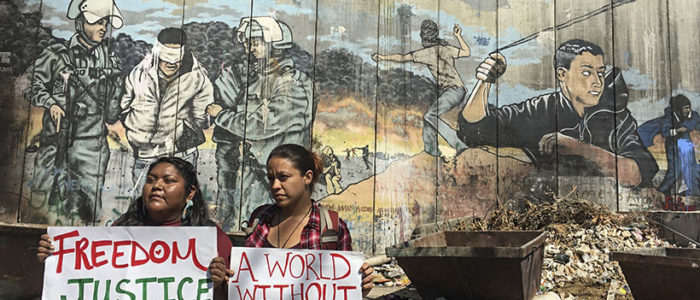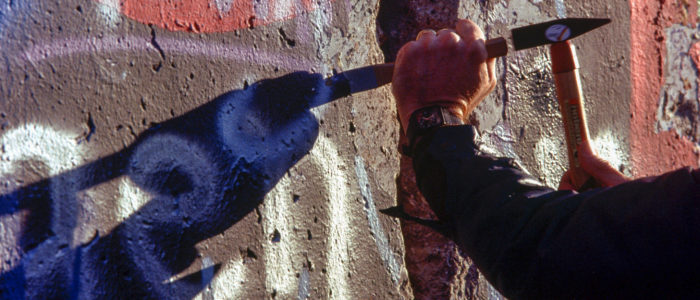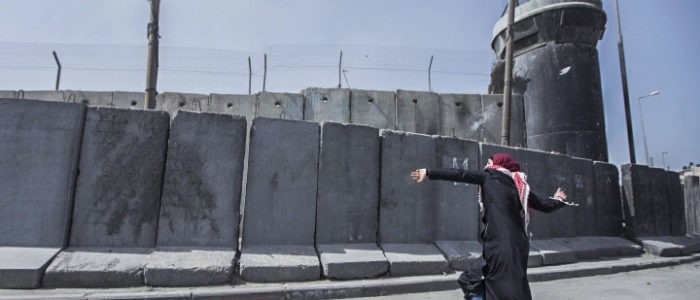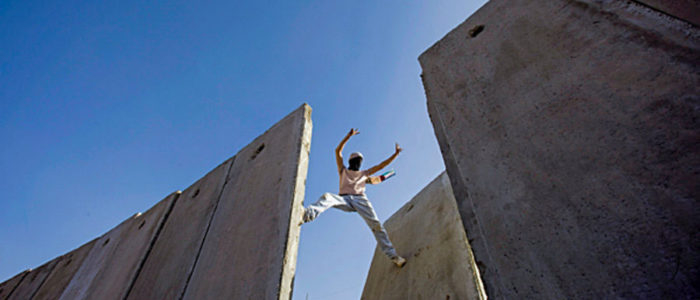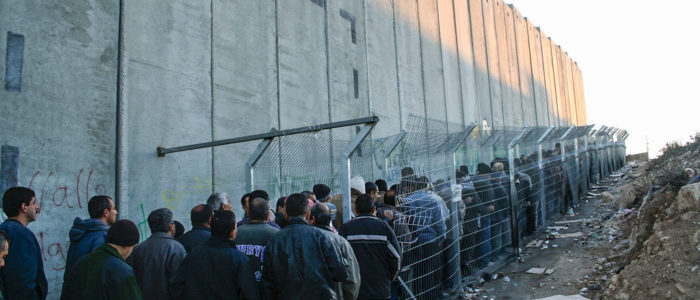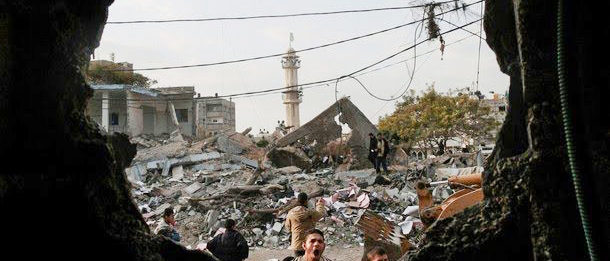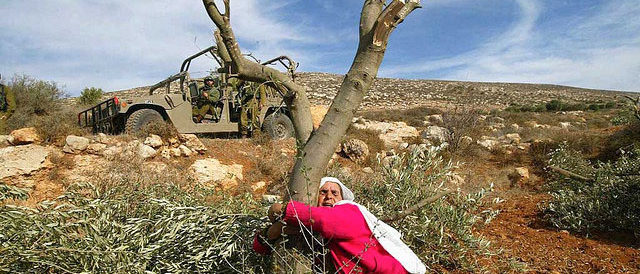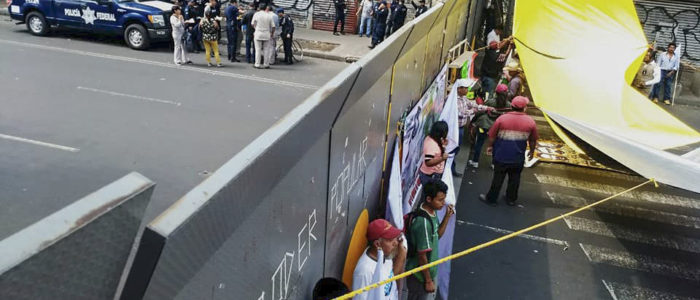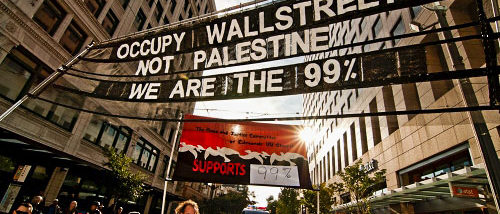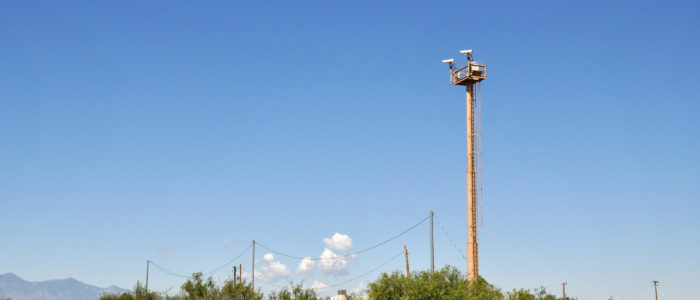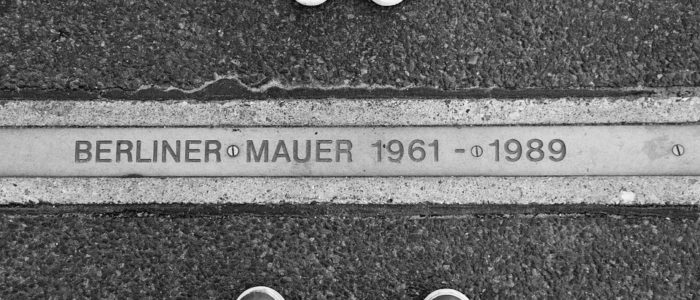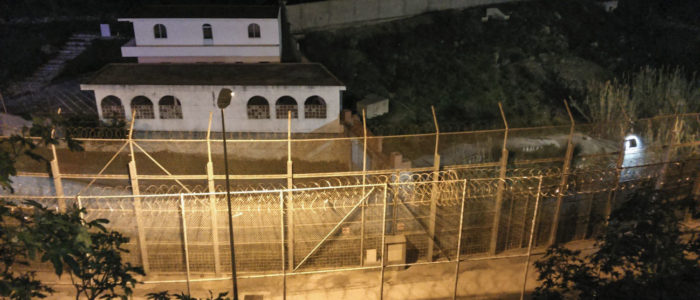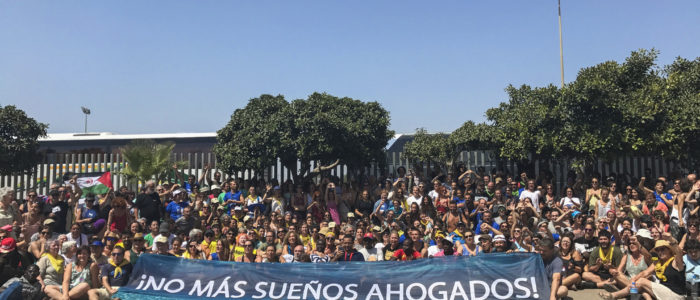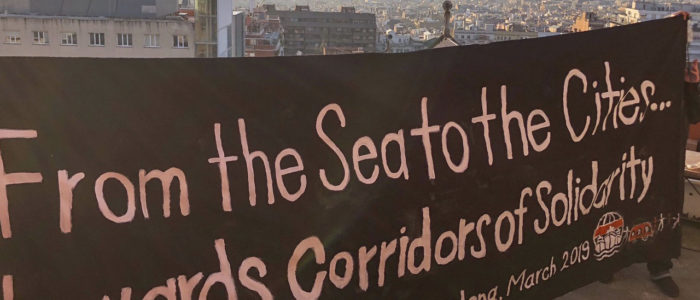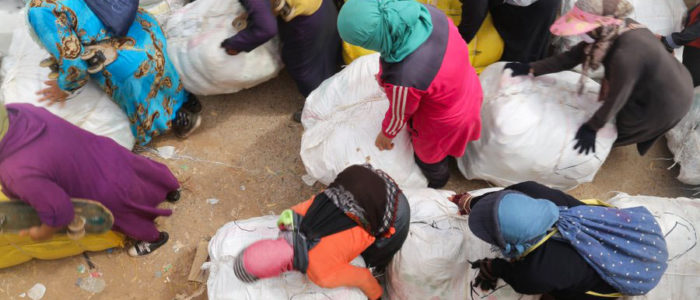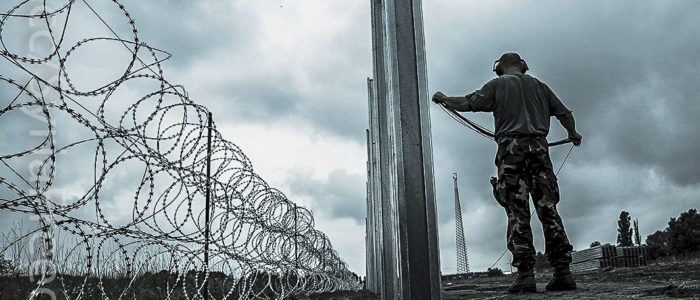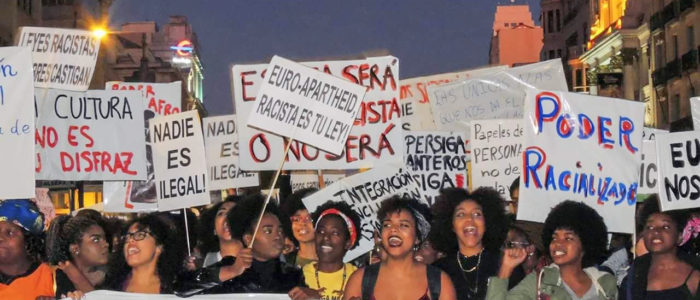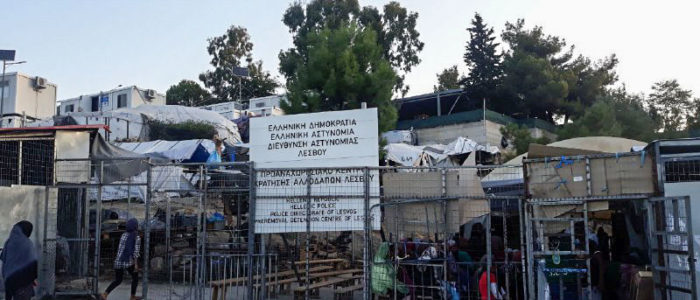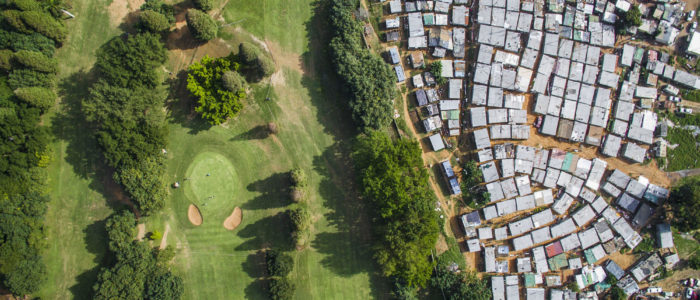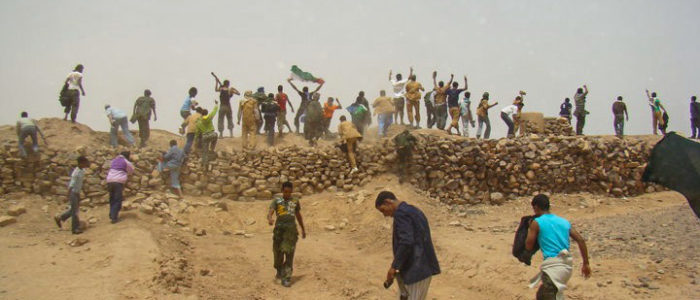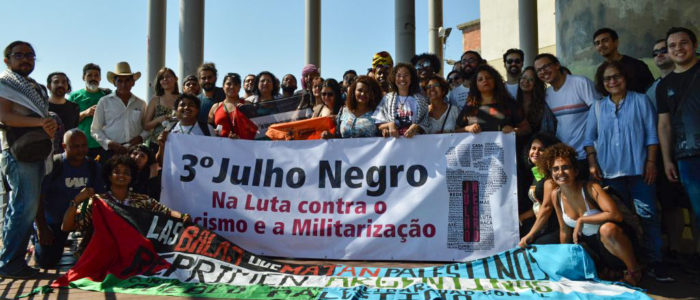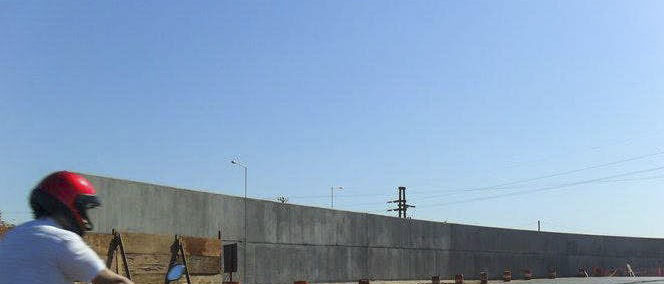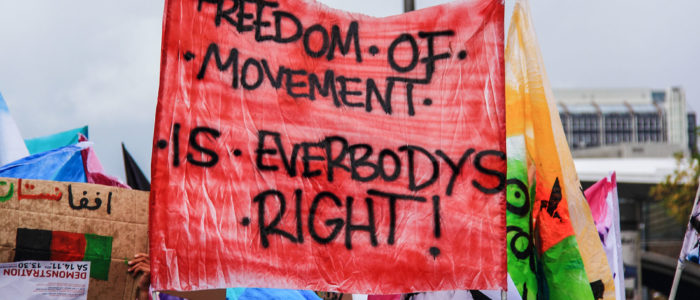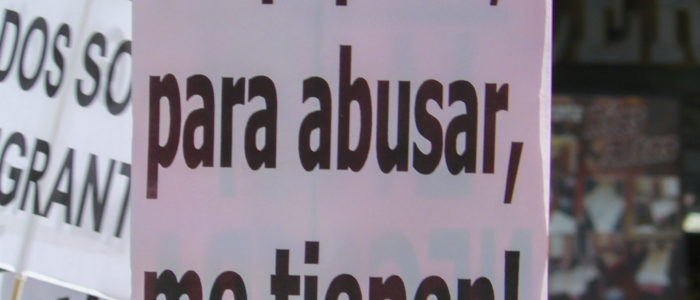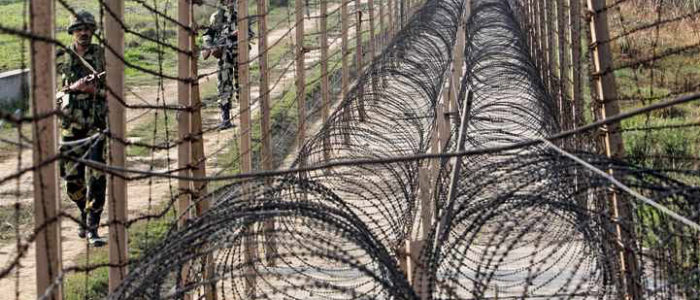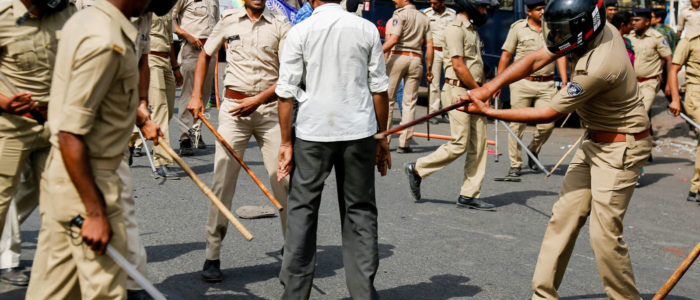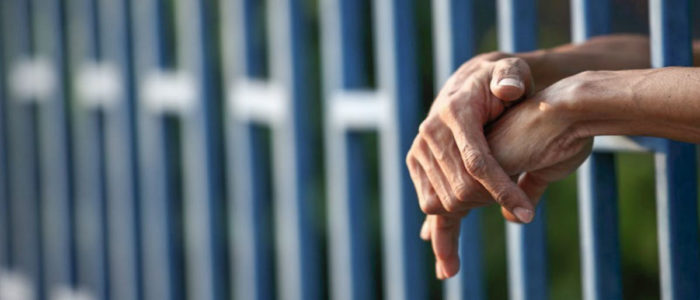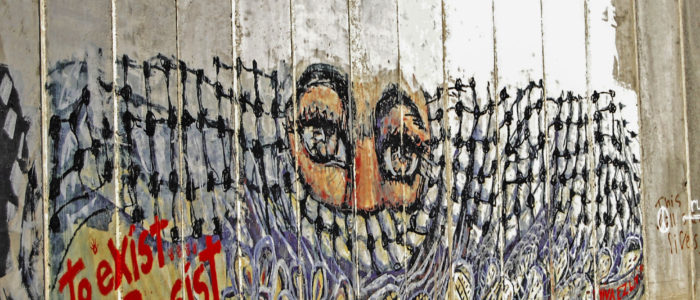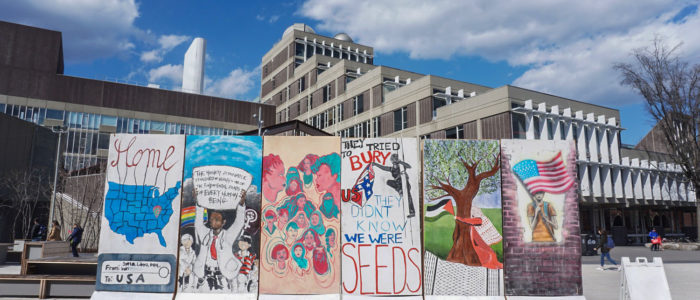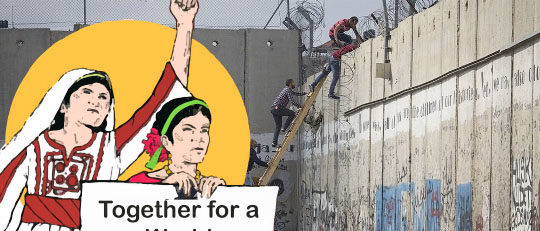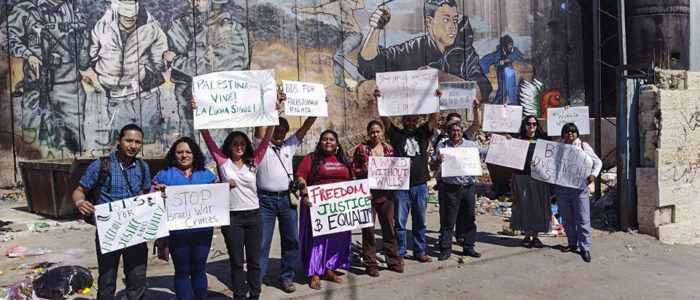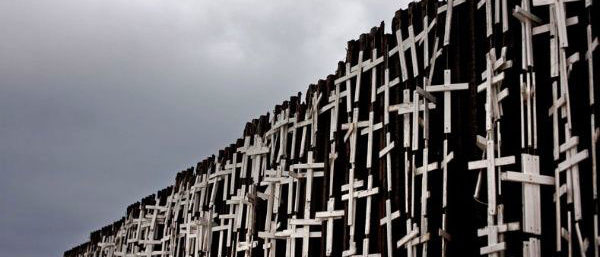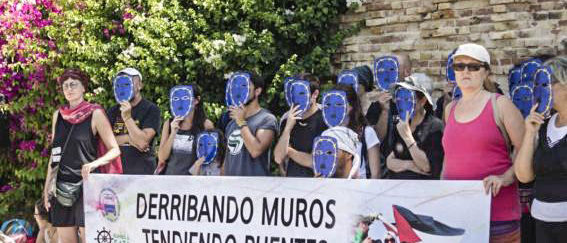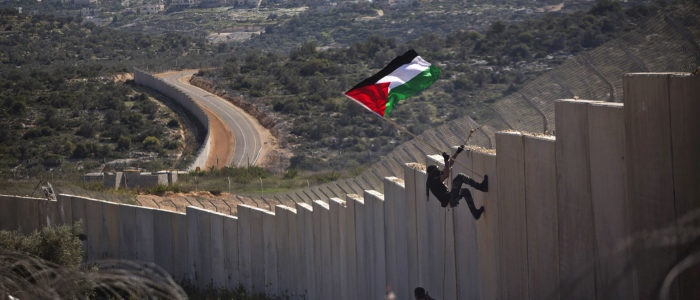(translated by Michael Loomis)
The Walls of the territory called Argentina
The wall in Argentina. (Credits: German Romano.)
Over the past several years apartheid walls against people have become proliferate in this territory called Argentina. Five Argentine cities have a large number of walls: Buenos Aires, Buenos Aires, Mendoza, Córdoba and Santa Fe. These walls have generated explicit places of confinement similar to jails. This is conducted through a conception of otherness; targeting a person who is poor or migrant. Private enterprises allowed by the State, or the State itself, execute these policies of confinement. The excuses used to cover up the real motive – the hatred of the poor and migrants – of these social undercurrents are always the same: security threats or drug trafficking.
The alliance between private companies, the State and the media work to carry out these policies very clearly. The most read digital medium in Argentina is Infobae. The owner, Daniel Hadad founded a company with Mario Montoto, President of the Argentine-Israeli Chamber of Commerce. Montoto sells control cameras and surveillance systems. This newspaper is a generator of subjectivities and public opinion, which matches its owner’s sentiments and produces fear and insecurity. People, for fear of losing their private property, then demand walls and more security by voting for political parties with platforms based on hard hands and easy triggers, which amounts to the murder of people they fear.
Why talk about concealed places of confinement?
In the Municipality of the Province of Buenos Aires, San Isidro, a high income neighborhood, the municipal executive made a wall in a public space along a street as to function as a border with another municipality. The segregation attempt only lasted a few days because the people who were in charge of it decided to demolish it. The reasons for the demolition can be found in the statements of the Mayor Gustavo Posse in regards to the negative international attention garnered by the attempt of ghettoization according to the definition of Loïc Wacquant. Posse said “It is true that the project, which is carried out on many sides, is to block the crossing of the streets so that traffic is forced on two or three sides so that there are police detachments, cameras, shelters for people waiting for public transport.”
He also continued along the same lines about the extreme vigilance of a sector of society: “It is much better, there is a very strong patrol, but that place remains a place of concern. Today it is saturated with patrolling and without a wall, but at some point it would be good, I do not say a wall, but that the circulation is forced by three places of very strong police presence. “Today with the new technologies of facial recognition and surveillance system’s control over the population by the repressive forces of the State has increased significantly.
Five Argentine cities have a large number of walls: Buenos Aires, Buenos Aires, Mendoza, Córdoba and Santa Fe.
In many military dictatorships or right wing governments there have been plans to expel migrants and poor people, and in this democracy it does not much differ. An example of this situation is Villa 31 in Buenos Aires, which had four eradication programs; one of them was during the right-handed dictatorial government of Agustín Justo in 1935. Again in 1968, during the rule of the radical Arturo Illia and throughout the civic-military-ecclesiastical dictatorship in 1976, there was a reduction in the population of the neighborhoods from almost 200,000 people in 1976, to just over 10,000 in 1983. The same problems are happening in the current democracy with the present government in regards to the rights of the alliance Change.
National shame
The wall between Argentina and Paraguay was built by the authorities of the Yacyretá Binational Dam. Wiring was first placed in 2014 and then the construction of the wall began at a cost of US $15 million. This segregationist wall makes it impossible for people to cross the border on foot, so it is only possible via vehicles, train or bus. It is important to note that public transport is all operated by the same company, Don Casimiro. Various protests have been made against this wall and progress was only achieved in 2017 when the authorities demolished 8 meters to allow for the direct passage of vehicles.
The national and provincial authorities never expressed their reasons for the construction of this wall, however a deputy from Salta, Liliana Mazzone, during the construction expressed on social networks, “I’m glad!!! Tired of Paraguayans who vote and charge in Argentina!!! To control!!!!” This reveals how xenophobia is part of the Argentine population. In recent years, the Argentine authorities have not been able to stop Argentines from crossing the border to load fuel in Paraguay as it has a much lower cost.
“A wall similar to that of Gaza”
In an interview in 2017 for the newspaper Hoy de Paraguay, the city councilor of Encarnación, bordering Posadas, Andrés Morel expressed himself on the topic of the wall, “We Paraguayans, when crossing the border, we see a kind of animosity, because it is a wall similar to the one in Gaza. We felt that they want to separate in some way from us.” He continued that the population of Encarnación was completely at odds with the wall. The same forms of confinement and the devices carried out by the apartheid regime against the Palestinian people are now exported to segregate poor and migrant populations in the Argentine territory.
In Paraguay a petition was launched on Change.org demanding an end to the wall, “It seems that the idea of the reactionary American ultra-right-wing Donald Trump who requested the construction of a wall on the border between Mexico has been adopted locally and is in use. On our border with Paraguay it is not necessary at all. The officials who made this monstrosity possible are ignorant of our traditions and customs. With this construction, the petty trade across the border is being damaged to the point in which many humble people cannot survive. This affects both Argentines and Paraguayans. It also obstructs the view of a waterfront that is an example of natural beauty. They have walled off the most important income sector in the province of Misiones, while neglecting hundreds of border points where drugs and wholesale contraband are passing.
